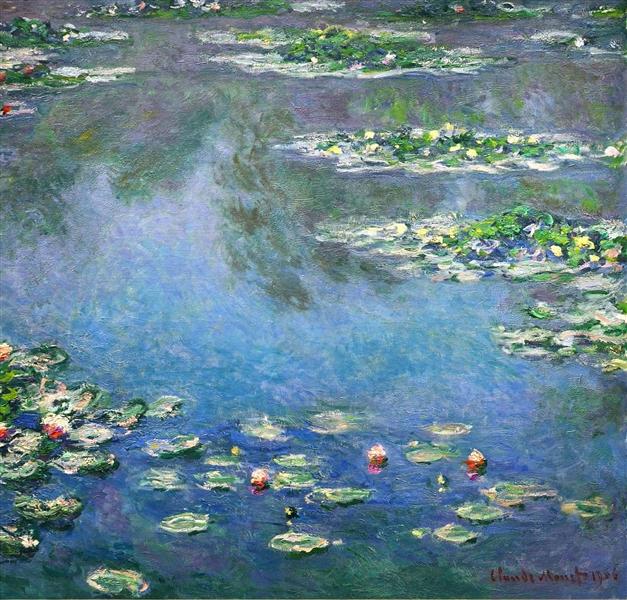Description
In his 1906 painting Water Lilies, Claude Monet encapsulates the essence of his garden at Giverny, a place that would become the epicentre of his artistic experimentation and his revolutionary contributions to modern art. Part of a series dedicated to the aquatic plants in his pond, this painting reflects his mastery of capturing light and atmosphere, a fundamental characteristic of Impressionism, the movement he helped found and develop.
The composition of the work is notable for its focus on a stylized and almost abstract natural environment. Monet eliminates the depiction of human or animalistic figures, focusing exclusively on flora and water. The canvas is flooded with an ordered chaos, where the shapes of the water lilies and the ripples of the water create a dynamic pictorial surface. This approach not only disengages the viewer from a narrative scene, but invites a meditation on nature itself and its ephemeral beauty.
The use of color in “Water Lilies” is one of its most outstanding aspects. Monet applies vibrant shades of green and blue that intertwine with the whites, pinks and yellows of the flowers. The careful selection of the palette, carefully mixed and applied, allows the reflections of the sky to integrate into the surface of the water, creating an almost synergistic connection between the environment and the plants themselves. Reflecting subtle changes in lighting, Monet achieves almost an effect of movement, suggesting a living and changing landscape.
A fascinating element of this work is the interaction of light with the water's surface. Monet frees his brushstrokes from the restrictions of classical form, exploring the visual impression that light produces on water. This technique anticipates future developments in abstract art, where objective representation is blurred in favour of a more emotional and sensorial conception. “Water Lilies” thus becomes a precursor not only of 20th-century art, but also of experiments that would challenge the norms of Western art.
The Water Lilies series was painted over a number of years and reflects the evolution of Monet's style. In contrast to earlier works, where details were more defined and compositions more structured, here we see a descent into what could be considered a deconstruction of the landscape. The absence of a vanishing point, straight lines, and delimiting elements plays an essential role in the way the viewer is immersed in the atmosphere of the painting. Monet seeks not only to see nature, but to feel it and to convey that emotion through his art.
As the viewer enters the work, his or her gaze is guided by the rhythmic repetition of the aquatic forms, a loop that draws the attention towards the infinity of the pond adorned with water lilies. This visual cycle, which seems to invite a silent communication with nature, reminds us that these works are not only lyrical landscapes, but also meditations on perception and the transitory beauty of the world.
The painting "Water Lilies" is a testament to the genius of Monet, who, through his innovative attitude, contributed to changing the course of modern art. His dedication to light, color and nature continues to inspire generations of artists and viewers, making it a fundamental work within the Impressionist legacy. In the context of the rise of abstraction and the focus on personal perception of the world, Monet stands out not only as a landscape painter, but as a pioneer in the search for the ineffable in nature.
KUADROS ©, a famous painting on your wall.
Hand-made oil painting reproductions, with the quality of professional artists and the distinctive seal of KUADROS ©.
Painting reproduction service with satisfaction guarantee. If you are not completely satisfied with the replica of your painting, we will refund 100% of your money.

